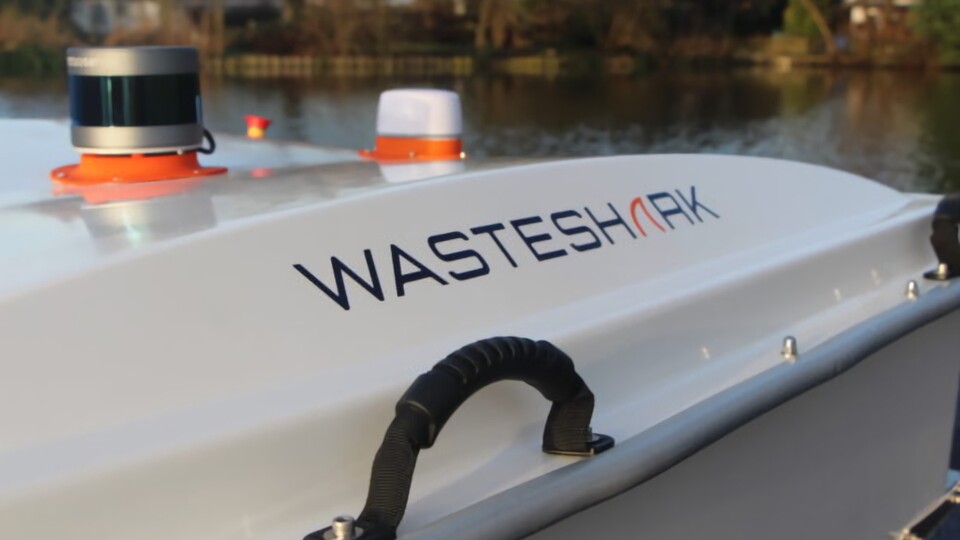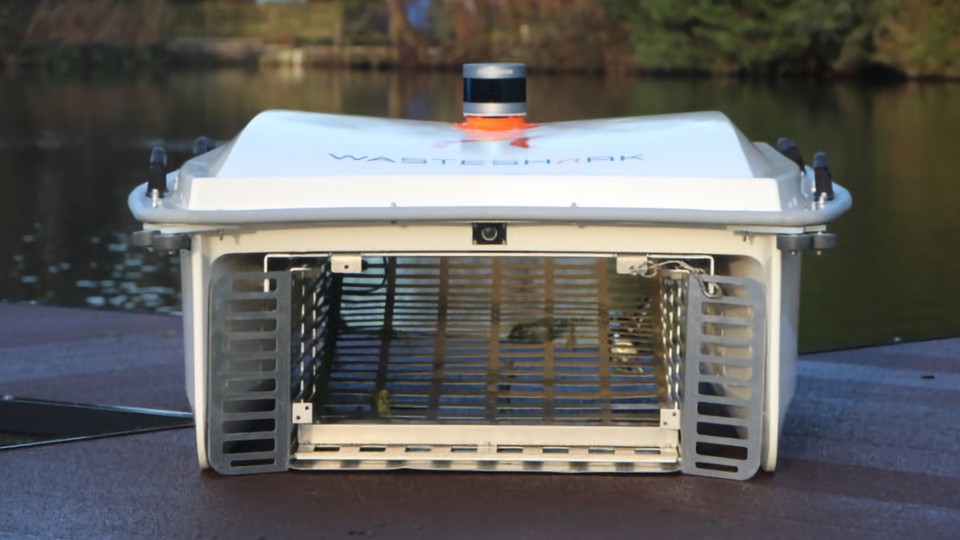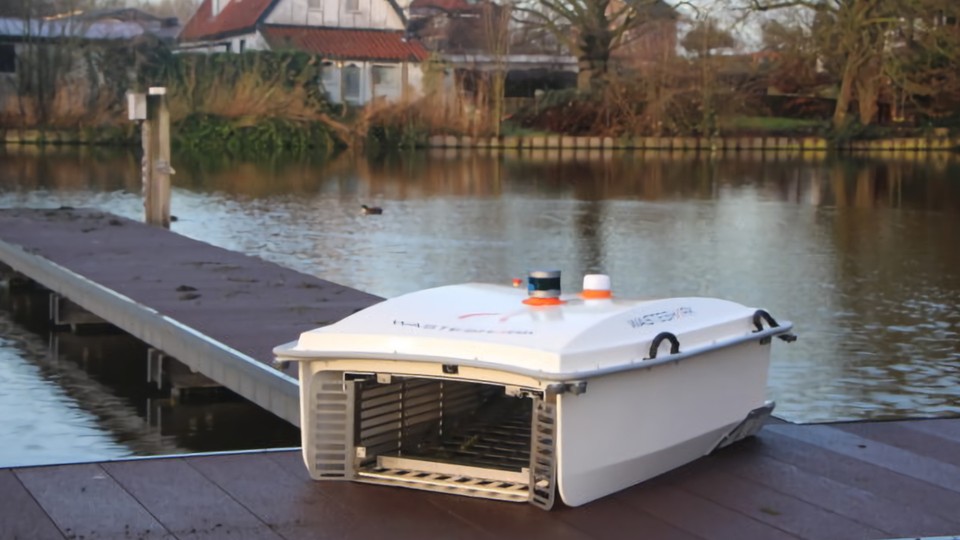Quelle: RanMarine Technology.
275 million tons of plastic are floating in the sea worldwide. A big problem, which is why companies like Ocean Cleanup are developing ideas to fish plastic waste out of the oceans.
However, there is also a lot of plastic waste in calm waters such as rivers or ports. A new robot aims to solve this problem.
The Wasteshark cleans the rivers
The Wastershark is essentially a floating vacuum robot that can patrol rivers and collect anything that floats on the surface. The inventor of the Wastershark, Richard Hardiman, was inspired by whale sharks when designing the robot.
The Wasteshark takes in water like a whale shark, filters it and releases it again. Source: RanMarine Technology.
Similar to whale sharks, the Wasteshark has a spacious “mouth” that can open and close. When the mouth is open, it collects surface water and releases it at its end. All larger objects in the water, for example plastic bottles, get stuck in the Wasteshark’s “belly”.
According to Richard Hardiman, the Wasteshark poses no threat to fish or other creatures. The Wasteshark swims too slowly to catch fish, and waterfowl such as ducks simply swim away.
The Wasteshark can remove so much plastic
The Wastshark is fully electric and can travel 3 km on one battery charge. This route takes him about six hours. Along the way, the Wasteshark can collect and bring back around 350 kg of plastic waste.
In addition to plastic waste, the Wasteshark also collects measurement data from the water in which it is driven. This allows the Wasteshark to clean rivers and collect data on water quality at the same time.
The Seashark can not only remove plastic waste, but also larger algae. Source: RanMarine Technology.
For navigation, the Wastershark uses a camera, LiDAR sensors, and an echo sounder. The Wasteshark can drive autonomously or be controlled manually and, according to Richard Hardiman, is designed to “clean up water while we sleep”.
Disney uses the Wasteshark
In addition to cleaning natural bodies of water, the Wasteshark can also be used for man-made bodies of water. For example, Disney uses the Wasteshark to clean the water in the Disney Parks.
The Seashark weighs 72 kg and can therefore be transported relatively easily. Source: RanMarine Technology.
The Wasteshark is also used in Europe. The port of Rotterdam uses the Wasteshark to keep the water in the port clean.
You can’t order your own Wasteshark for your pool, but there are vacuum robots that can clean your own four walls for you: Vacuum robot purchase advice: The best models ever, with and without a wiping function.
What do you think of the Wasteshark? Should all ports and municipalities have a Wasteshark that cleans the water surface? Or should plastic be completely banned instead so that water bodies no longer have to be cleaned of plastic? Please let us know your opinions and views in the comments.





 What’s happening with AI? Researcher explains why you can look forward to more creative NPCs, competition for ChatGPT and hot dog tomatoes
What’s happening with AI? Researcher explains why you can look forward to more creative NPCs, competition for ChatGPT and hot dog tomatoes Cowboy launches new on-demand service: That’s what’s inside
Cowboy launches new on-demand service: That’s what’s inside The new 4K Fire TV stick is now brutally reduced and transforms your old television into a smart TV
The new 4K Fire TV stick is now brutally reduced and transforms your old television into a smart TV The best mouse I’ve ever had, convinces me for gaming, work and home office and is different than all its predecessors!
The best mouse I’ve ever had, convinces me for gaming, work and home office and is different than all its predecessors! The first smart glasses suitable for everyday use that you can buy
The first smart glasses suitable for everyday use that you can buy